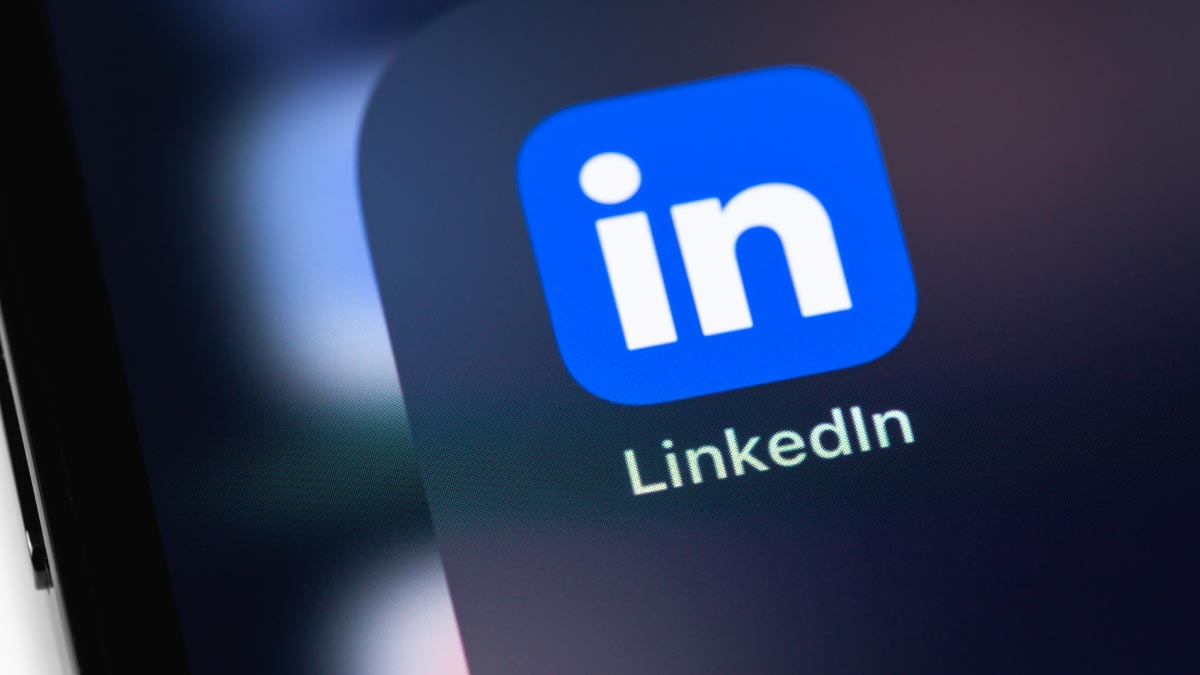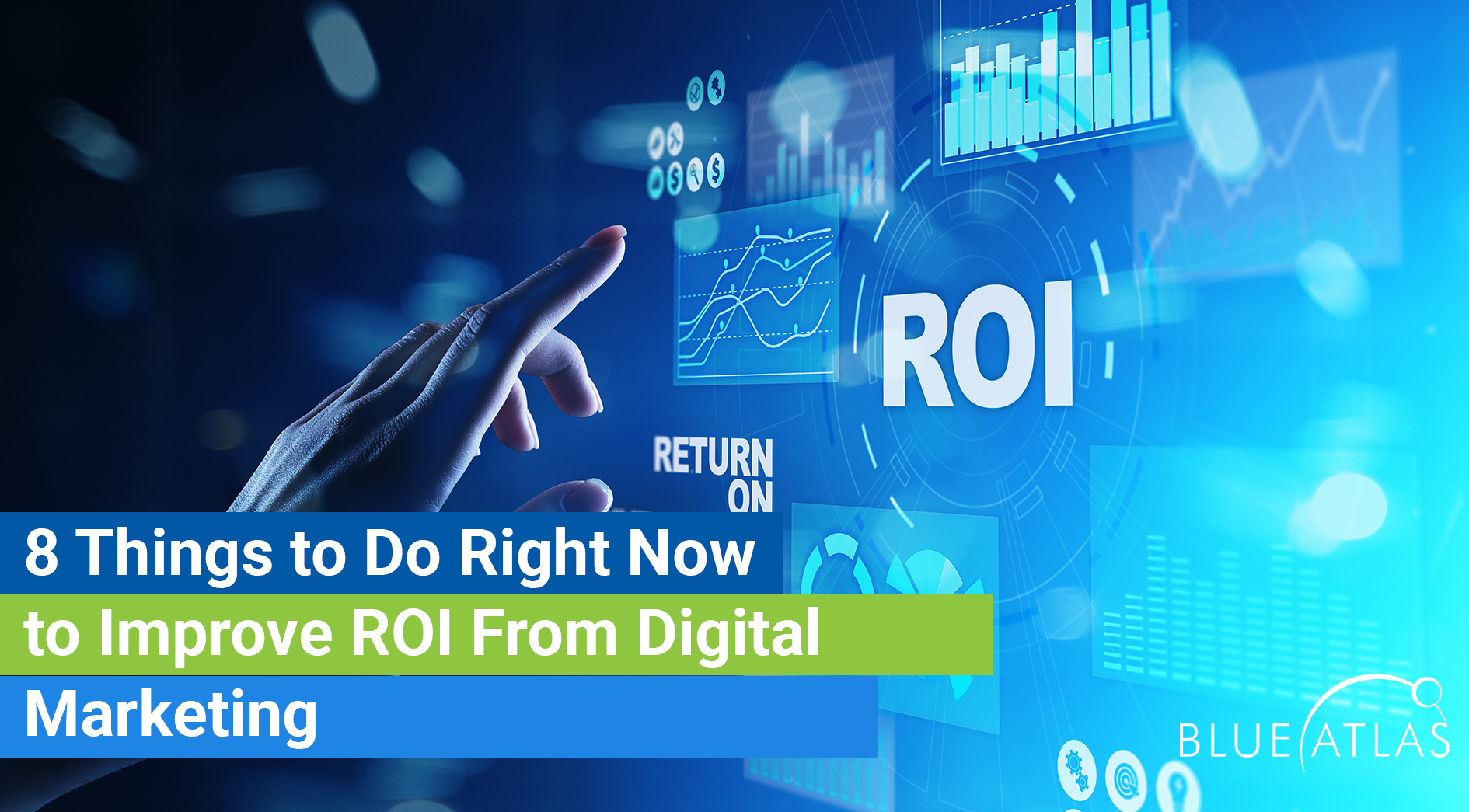Marketing Automation: Simplify Repetitive Marketing Tasks

Marketing automation can supercharge your business operations. It automates repetitive tasks, freeing up your team to focus on the big picture—strategic moves that drive growth.
Key Takeaways:
- Find out how marketing automation can help your team focus on growth strategies by efficiently handling tasks.
- Learn the benefits of sending personalized and timely communications to enhance customer satisfaction and build stronger connections.
- Stay updated on the latest trends in marketing automation, such as AI-powered content creation and strategies for reaching customers across multiple channels.
- Discover effective ways to measure and improve your marketing efforts for optimal return on investment.
- Follow a detailed guide to implementing marketing automation, from understanding your sales process to choosing the right tools and testing your tactics.
We’ll break down the essentials of marketing automation, explore what’s hot in the industry, and even show you real-world examples to give you a clear idea of how it works.
Ready to take your marketing strategy to the next level? Stay tuned for more!
Understanding Marketing Automation
Introduction to Marketing Automation
Marketing automation is your secret weapon for productivity. Imagine having a marketing sidekick that tackles those repetitive tasks, leaving you free to focus on the big picture. This is a game-changer, especially in the industrial world, where keeping things running smoothly and leads engaged is key.
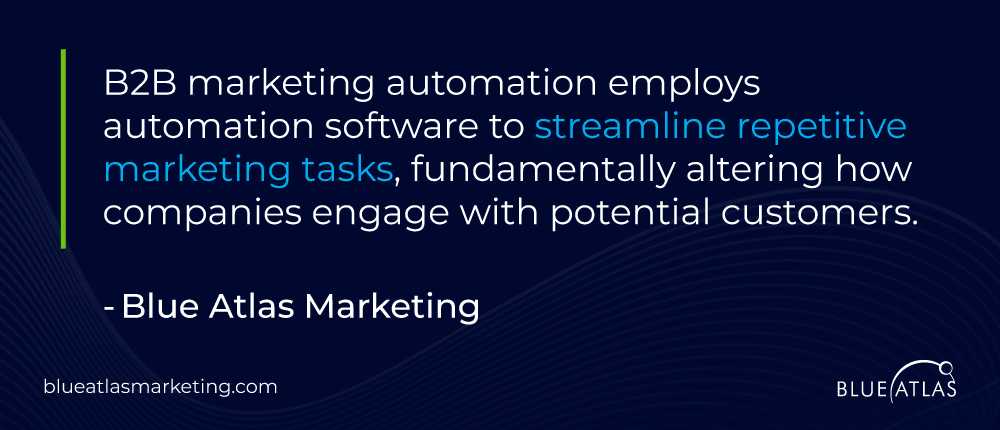
Key Components and Functionalities
Marketing automation streamlines tasks with powerful tools. Think email marketing, social media post scheduling, and nurturing qualified leads with automated workflows.
Sending targeted emails based on what users do on your site can boost engagement by 70% compared to manual operations. Plus, connecting your CRM to your marketing automation software unlocks valuable customer insights for smoother interactions. This is all about working smarter, not harder, to connect with your audience.
You can learn more about What is B2B Marketing Automation.
Marketing Automation Trends
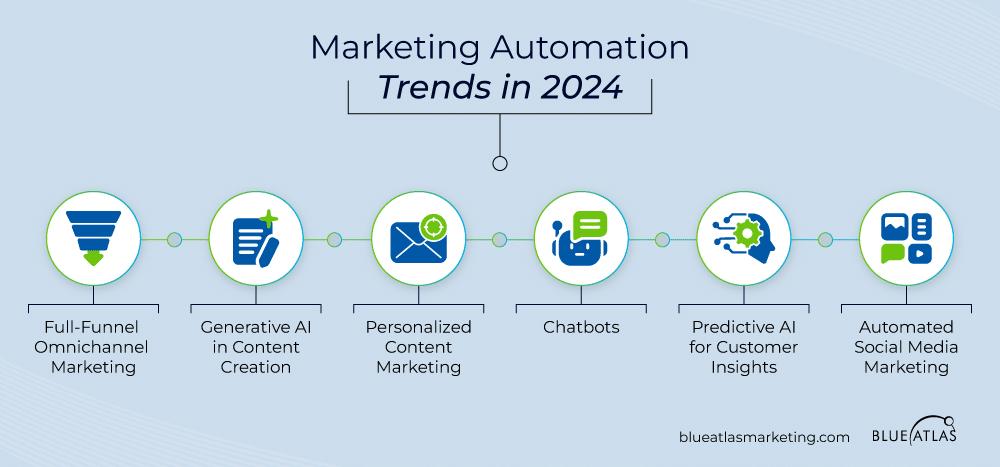
Current trends in marketing automation
Marketing automation is continuously evolving, integrating advanced technologies to enhance marketing strategies. Let’s explore some of the hottest trends:
- Full-Funnel Omnichannel Marketing: Imagine your customers gliding effortlessly from first touchpoint to purchase – no bumps in the road! This is what omnichannel marketing is all about.
- Generative AI in Content Creation: Ditch the Generic! AI tools can help craft personalized messages that resonate with individual customers, keeping them hooked and happy.
- Personalized Content Marketing: Talk directly to your customers’ wants and needs. Targeted messaging makes your marketing more relevant and effective—no more one-size-fits-all!
- Chatbots: Your 24/7 Customer Service Heroes: Chatbots can answer questions and interact with customers around the clock, taking your service and experience to the next level.
- Predictive AI for Customer Insights: AI can analyze customer data and guess their next moves. This lets you develop marketing strategies that are laser-focused and efficient.
- Automated Social Media Marketing: Schedule and post across all your platforms automatically. Stay consistently engaged without the constant hustle!
These trends are just a glimpse into the ever-evolving world of marketing automation. As a marketer, it’s an exciting time to be alive with all these new possibilities at our fingertips!
You may visit this article: Marketing Automation Trends to discover more about other emerging trends.
Predictions for Future Developments
The future of marketing automation is bursting with exciting potential thanks to AI and machine learning breakthroughs. Imagine software that predicts customer needs before they even happen! This is where predictive AI jumps in—letting businesses personalize marketing like never before.
Get ready for a major upgrade in lead capture and CRM data reporting, too, because automation is about to get smarter, giving deeper insights into customer behavior and seriously boosting marketing efficiency.
The bottom line? Marketing automation is having a more serious programming boost as time passes by.
Marketing Automation Workflows
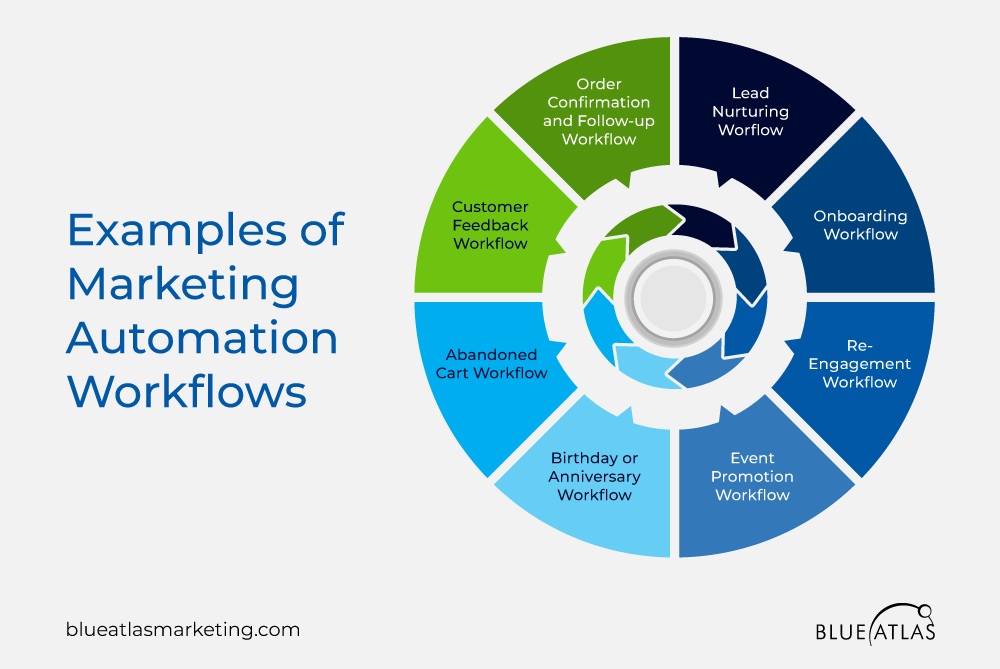
Examples of Effective Workflows
Marketing automation workflows streamline various marketing tasks, ensuring consistency and efficiency.
Lead Nurturing Workflow
Engage potential customers through targeted emails based on their behavior, gradually guiding them through the sales funnel.
Onboarding Workflow
Automate the process of welcoming new customers with a series of emails, helping them get started with your product or service and improving retention.
Re-engagement Workflow
Target inactive customers with personalized messages to rekindle their interest and bring them back into the sales cycle.
Event Promotion Workflow
Automate event-related communications, such as sending invitations, reminders, and follow-ups, to ensure maximum participation and engagement.
Birthday or Anniversary Workflow
Send automated birthday or anniversary greetings with special offers to enhance customer loyalty and engagement.
Abandoned Cart Workflow
Recover potentially lost sales by automatically sending follow-up emails to customers who left items in their shopping carts.
Customer Feedback Workflow
Automate requests for feedback after a purchase or interaction to gather valuable insights and improve future customer experiences.
Order Confirmation and Follow-up Workflow
Sends customers an immediate follow-up email after a purchase. It ensures that the customer receives a confirmation email instantly, giving them peace of mind that their order has been successfully processed.
These examples illustrate the versatility of marketing automation workflows. For more extensive samples of effective workflows, see Marketing Automation Workflows.
How to Create Efficient Automation Workflows?
Developing an efficient marketing automation workflow involves several crucial steps to ensure effective communication with your audience:
Identify Goals and Target Audience
Begin by defining your objectives and understanding your audience. This foundational step helps you create a workflow that meets specific needs.
Map Out the Customer Journey
Outline the customer journey, identifying key touchpoints where automation can boost engagement. Choose the right tools and platforms that integrate well with your existing systems.
Design the Workflow with Triggers
Set triggers for specific actions like newsletter sign-ups or purchases to automate responses effectively. This ensures timely and relevant communications.
Personalize and Segment Content
Create personalized content for different audience segments to enhance relevance and engagement. According to ActiveCampaign, such workflows can lead to 46% higher open rates.
Monitor and Optimize Continuously
Regularly review performance metrics to refine the workflow. Update content and adjust triggers to stay aligned with changing customer behaviors and business goals.
While there might be challenges in creating a workflow, focusing on your objectives ensures better results.
The Benefits of Marketing Automation for Businesses
Increased Efficiency and Productivity
Marketing automation is a game-changer for efficiency and productivity. Automating repetitive tasks like email marketing, lead scoring and social media frees up your team’s time for more strategic work. Think of it as getting a helping hand!
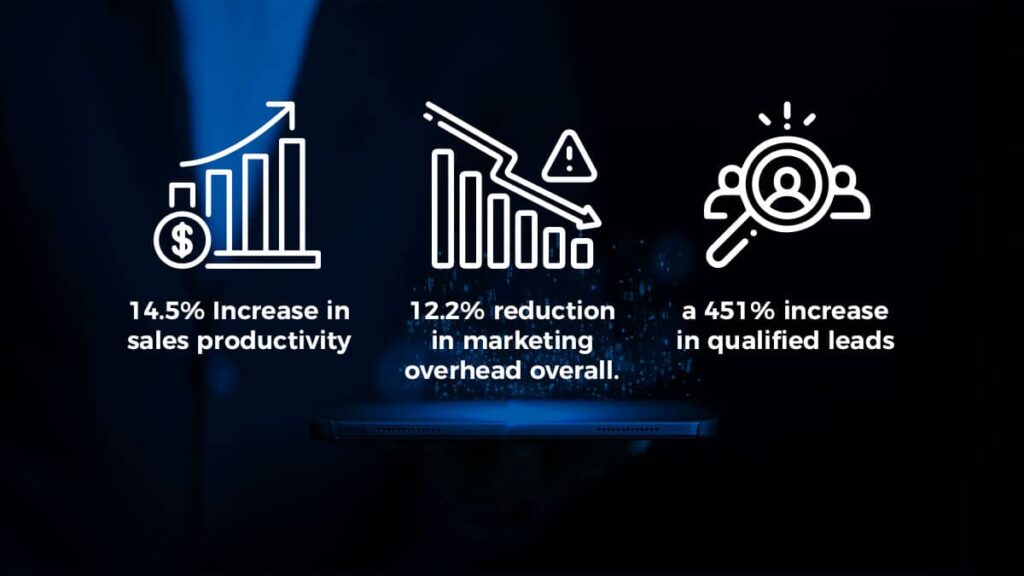
Salesforce even found that companies using automation see a 14.5% boost in sales productivity and a 12.2% reduction in digital marketing overhead. That’s real money and time saved!
The secret sauce? Automation streamlines processes and keeps workflows running smoothly. Plus, it minimizes human error, ensuring consistent messaging across the board.
Enhanced Customer Engagement and Experience
Marketing automation can seriously boost your customer engagement game.
A cloud service company uses it to send personalized welcome emails to new customers. These emails help them navigate the features quickly and easily, leaving a great first impression.
Automated messages keep customers happy with fast answers and a personalized touch. This strengthens relationships, leading to loyal customers and booming business growth.
Improved Data and Insights
Effective marketing automation relies on data collection and analysis, which is crucial for personalizing marketing efforts and measuring their impact.
Properly collected B2B data enables better targeting, leading to higher conversion rates. Businesses can craft personalized campaigns that address specific needs and preferences by segmenting the audience based on precise data, enhancing engagement, and improving conversion rates.
This data-driven approach allows for continuously optimizing marketing strategies, ensuring they remain relevant and effective in a dynamic market environment.
Marketing Automation Best Practices
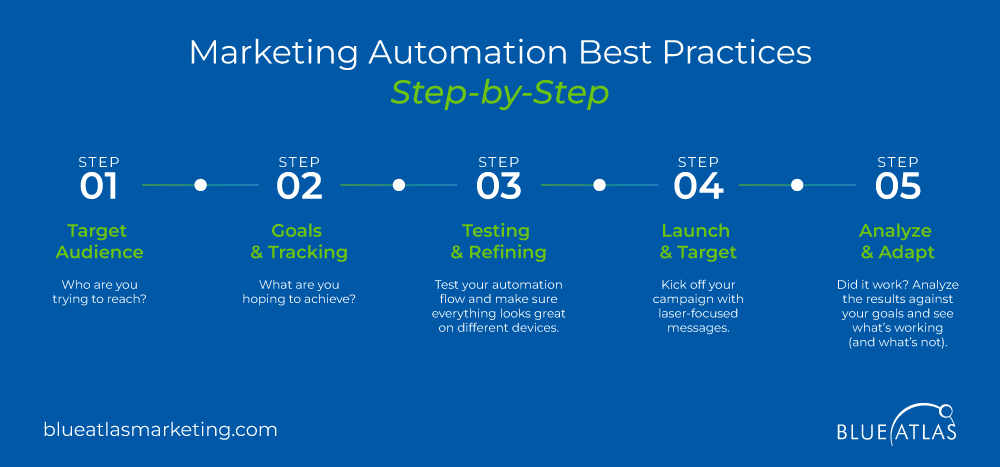
Strategies for Successful Implementation
Mastering marketing automation is all about two things: a solid plan and flawless execution. Let’s dive into how to implement them both:
- Target Audience – Who are you trying to reach? Figure out your ideal customer and explore the best platforms to connect with them.
- Goals & Tracking – What are you hoping to achieve? Set clear goals and choose the right metrics (KPIs) to measure success. Also, estimate audience sizes for different customer segments.
- Testing & Refining – Before the launch, test your automation flow and make sure everything looks great on different devices. This is where you can fine-tune the messaging and ensure a smooth user experience.
- Launch & Target – Go time! Kick off your campaign with laser-focused messages tailored to specific audience segments.
- Analyze & Adapt – Did it work? Once your campaign runs its course, we’ll analyze the results against your goals and see what’s working (and what’s not). This is where the learning happens!
Don’t be afraid to keep improving and optimizing those automation steps!
For more insights, jump on elevating your strategies to marketing automation best practices.
Tips for Maximizing Marketing ROI
Want to get the most out of your marketing automation? Here’s the secret: monitor it and make adjustments as you go. Track things like open rates, clicks, and conversions to see how your marketing campaigns are performing.
Regularly update your content and tweak your workflows based on what the data tells you. This keeps everything fresh and effective. Plus, using fancy analytics tools can give you a deeper understanding of your customers and how your campaigns are doing.
Personalization is your friend too. Emails and messages with a personal touch are more likely to grab attention and get results. Think about it: using a customer’s name or mentioning their past purchases makes your communication way more relevant and impactful.
How Marketing Automation Enhances the Customer Journey
Impact on Customer Experience
It all starts with understanding your audience! When you know what makes them tick – their needs, wants, and decision-making process – you can craft content that resonates with them at every step. Here’s where marketing automation becomes your table-turner.
Imagine sending personalized messages right when customers need them most. Marketing automation streamlines the customer experience, making it a breeze. Think of it like having an automatic answer machine for your customers—instantly providing the information they need and keeping them engaged. That’s the magic of marketing automation!
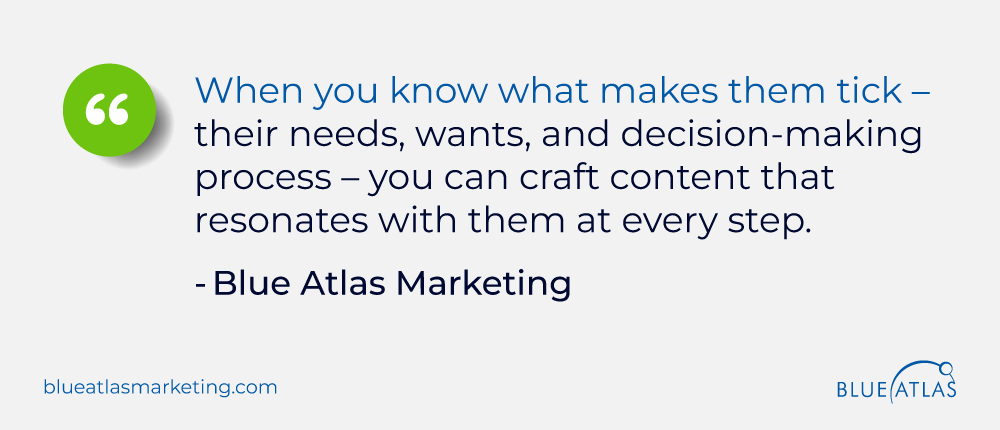
By using data-driven insights, businesses can segment their audience and tailor their messages to meet specific needs, ensuring that each interaction is meaningful and engaging. This approach improves customer satisfaction and builds stronger relationships, leading to increased loyalty and higher conversion rates.
Real-World Examples
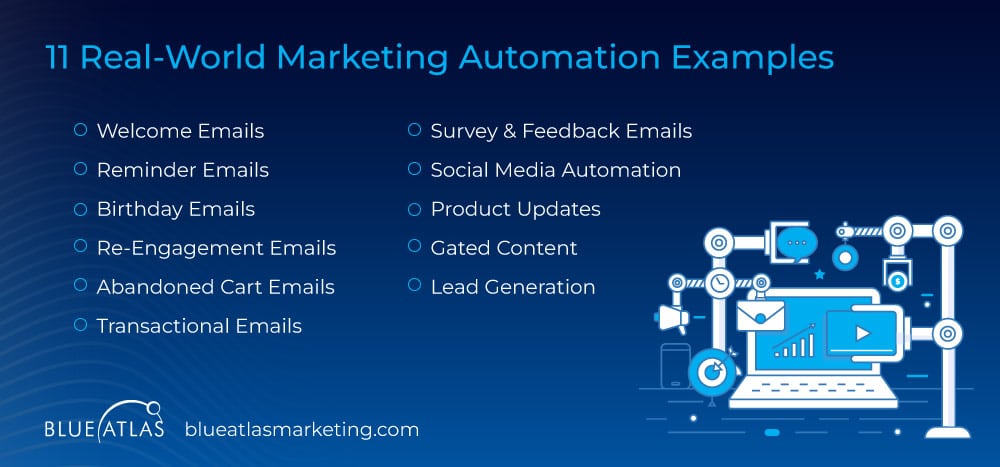
There are numerous real-world examples of how marketing automation can be implemented to enhance the customer journey. Examples include:
- Welcome Emails: Automatically sent to new subscribers or customers to introduce them to your brand.
- Reminder Emails: Sent to remind customers of important dates or upcoming events.
- Birthday Emails: Personalized messages sent on customers’ birthdays to build rapport.
- Re-Engagement Emails: Targeted emails designed to re-engage inactive subscribers.
- Abandoned Cart Emails: Sent to customers who leave items in their shopping cart, encouraging them to complete the purchase.
- Transactional Emails: Order confirmations, shipping notifications, and other transactional messages.
- Survey & Feedback Emails: Requests for customer feedback to improve products and services.
- Social Media Automation: Scheduled posts and automated responses to maintain an active social media presence.
- Product Updates: Informing customers about new features or products.
- Gated Content: Providing exclusive content in exchange for customer information.
- Lead Generation: Automated processes to capture and nurture leads.
Marketing Automation Tools
Comparison of Popular Platforms
Choosing the right marketing automation software or tool is essential for maximizing efficiency and effectiveness. Here are eight of the best platforms available:
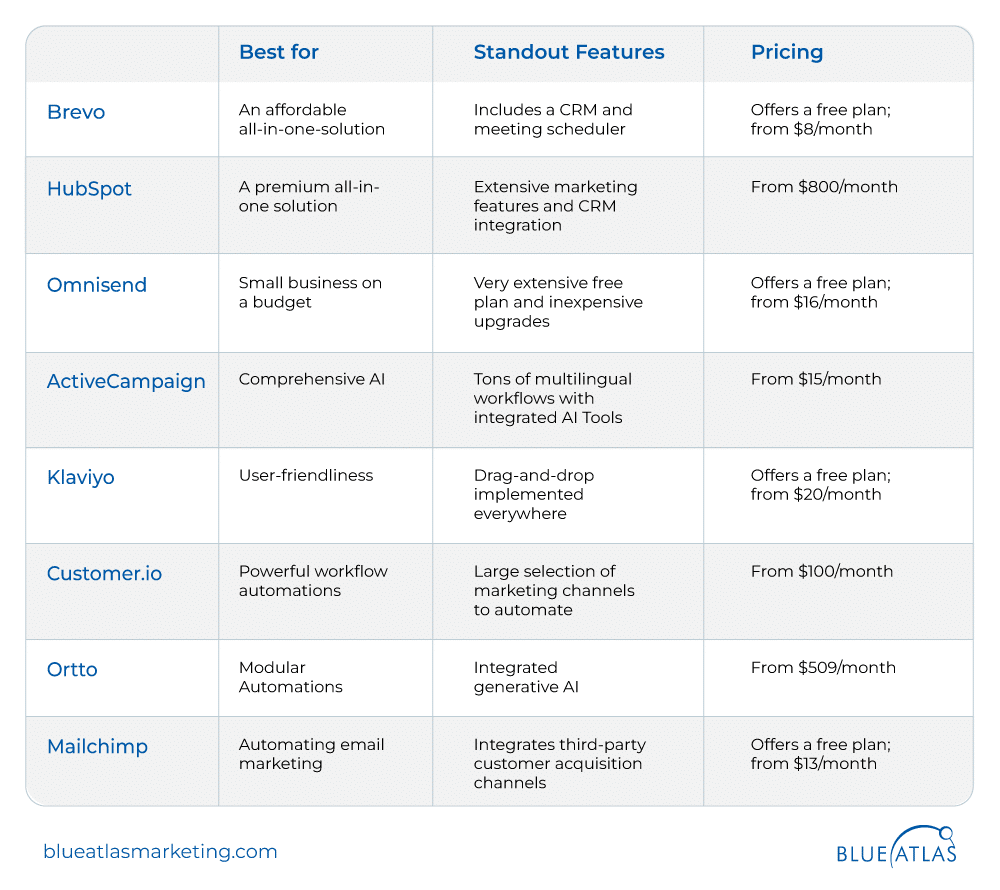
- Brevo – Offers an affordable all-in-one solution ideal for businesses looking for comprehensive tools without a hefty price tag.
- HubSpot – A premium all-in-one solution known for its robust features and seamless integration capabilities.
- Omnisend – Perfect for small businesses on a budget, offering powerful automation tools at a reasonable cost.
- ActiveCampaign – Renowned for its comprehensive AI features, making it suitable for businesses seeking advanced automation capabilities.
- Klaviyo – Praised for its user-friendliness, making it easy for businesses to set up and manage their automation workflows.
- Customer.io – Provides powerful workflow automations, ideal for businesses looking to streamline their marketing processes.
- Ortto – Offers modular automations, allowing businesses to customize their automation processes to fit their unique needs.
- Mailchimp – A popular choice for automating email marketing, known for its ease of use and wide range of features.
By selecting the right tool, businesses can enhance their marketing efficiency and drive better results.
Overcoming Challenges in Marketing Automation
Common Pitfalls and How to Avoid or Resolve Them
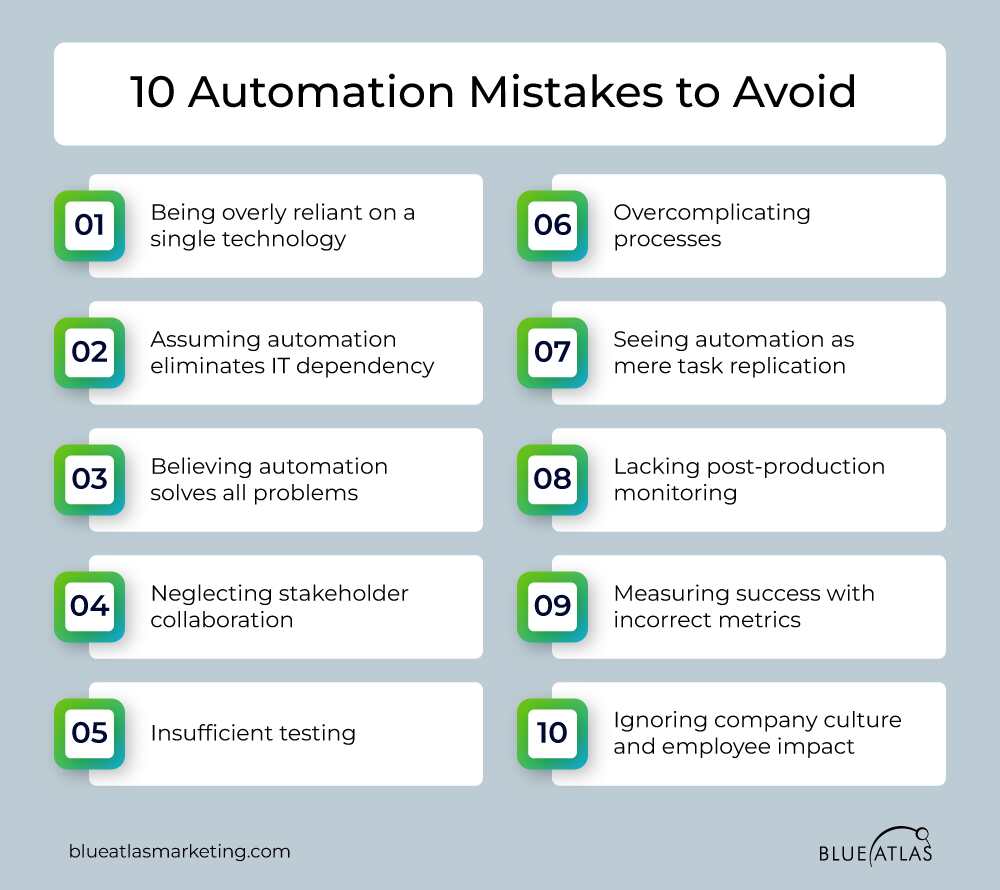
Implementing marketing automation can significantly enhance efficiency, but it’s essential to navigate common pitfalls to ensure success. Here are some frequent challenges and strategies to overcome them:
- Being Overly Reliant on a Single Technology: Diversify your tools and platforms to avoid dependency on a single technology, which can limit flexibility and adaptability.
- Assuming Automation Eliminates IT Dependency: Understand that IT support is crucial for seamless integration and troubleshooting.
- Believing Automation Solves All Problems: Recognize that while automation can enhance efficiency, it is not a cure-all and should be part of a broader strategy.
- Neglecting Stakeholder Collaboration: Engage all relevant stakeholders to ensure the automation strategy aligns with overall business goals and needs.
- Insufficient Testing: Allocate adequate time for testing to identify and resolve issues before full implementation.
- Overcomplicating Processes: Keep workflows simple and focused to avoid overwhelming the system and your sales team.
- Seeing Automation as Mere Task Replication: Focus on leveraging automation to enhance strategic initiatives, not just replicate manual tasks.
- Lacking Post-Production Monitoring: Implement monitoring mechanisms to continually assess and optimize automation processes.
- Measuring Success with Incorrect Metrics: Use relevant and accurate metrics to evaluate the effectiveness of your automation efforts.
- Ignoring Company Culture and Employee Impact: Ensure that your automation strategy considers and supports your company culture and employee well-being.
By being aware of these common pitfalls and proactively addressing them, businesses can maximize the benefits of marketing automation and achieve more effective and sustainable results.
Getting Started with Marketing Automation
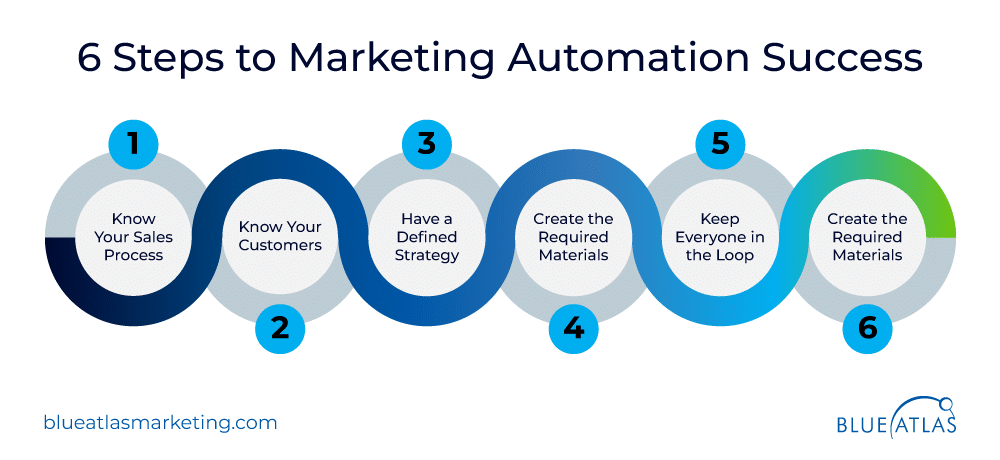
Step-by-Step Guide to Implementation
Implementing marketing automation effectively involves a structured approach. Here’s a step-by-step guide to help you get started:
- Know Your Sales Process: Understanding your sales process is the first step. Identify key stages and touchpoints where automation can enhance efficiency.
- Know Your Customers: Gain a deep understanding of your customers, including their pain points, preferences, and behaviors. This knowledge is crucial for creating personalized and relevant automated workflows.
- Have a Defined Strategy: Develop a clear strategy that aligns with your business goals. This strategy should outline how you plan to use automation to achieve your objectives.
- Create the Required Materials: Prepare all necessary materials, such as templates, useful content for automated email campaigns, and any other resources needed to execute your marketing automation strategy.
- Keep Everyone in the Loop: Ensure that all relevant stakeholders are informed and involved in the implementation process. This includes management, sales, IT, and marketing teams.
- Test Your Strategy: Before full deployment, thoroughly test your automation workflows to identify and resolve any issues. This step ensures that everything functions smoothly when you go live.
FAQs
What is the best marketing automation platform for startups?
The best marketing automation platforms for startups include HubSpot, which is user-friendly with robust features and integrations; Mailchimp, known for being affordable, easy to use, and ideal for small businesses; and ActiveCampaign, which combines email marketing, automation, and CRM functionalities.
Does marketing automation really work?
Yes, marketing automation effectively streamlines and enhances marketing efforts by automating repetitive tasks, personalizing customer interactions, and improving lead management throughout the customer lifecycle. It supports A/B testing for marketing activities, ultimately boosting efficiency, engagement, and conversion rates for businesses of all sizes.
Marketing automation technology can revolutionize your business by enhancing efficiency, boosting productivity, and improving customer engagement. By understanding the latest trends, implementing effective workflows, and leveraging the right marketing software, you can streamline your efforts and achieve remarkable results.
However, navigating the complexities of marketing automation can be challenging. That’s where Blue Atlas comes in. Blue Atlas excels in designing and implementing customized marketing automation solutions to achieve your specific business objectives.
Whether your focus is on enhancing customer relationship management, optimizing operations, or increasing customer engagement, the Blue Atlas Marketing team is ready to help. We provide comprehensive support to ensure your marketing automation implementation is successful and aligns with your strategic objectives.
Contact Blue Atlas today to transform your strategy with an effective campaign, ensuring your message reaches the right audience at the right time and driving your business growth with the power of automation.

